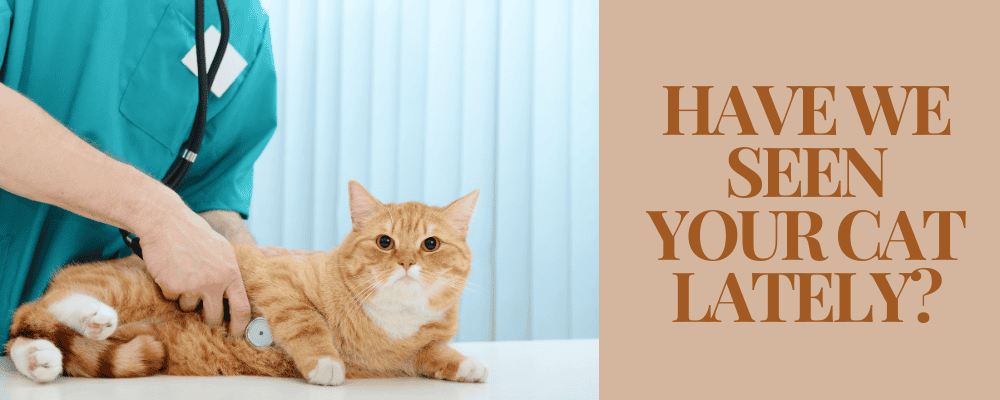Have we seen your cat lately? They sometimes get overlooked, but annual exams are important for them too. They are masters at hiding disease.
One of the greatest concerns among veterinarians and cat owners alike is how best to maintain your cat in as healthy a condition as possible for his entire life—from kittenhood to the senior years. Preventive care visits are a great way to provide care and keep your cat healthy.
Indoor cats are at less risk for traumatic injury and infectious diseases, but they can still develop diseases such as kidney failure, heartworms, dental disease, heart murmurs and diabetes. Annual exams are very important to pick these conditions up in the early stages because they are not obvious to the average cat owner.
We all know that preventing disease or catching it in its early stages is far better than treating it once it has had time to progress to a more advanced stage. Preventive health care on a regular basis will help you do just that, and save you and your pet from needless suffering and a larger financial burden. This article explains what preventive measures you can take to keep your cat healthy.
Just as annual physical exams are recommended for humans, they are recommended for our pets as well. If your cat is older or has medical problems, he may need even more frequent examinations. A year is a long time in a cat’s life. Assuming our cats will live to their early or middle teens, receiving a yearly exam means they will only have about thirteen exams in a lifetime. That is not very many when you think about it.
During your cat’s annual physical exam you should review these aspects of your cat’s health with your veterinarian:
- Vaccination status and potential for exposure to disease (i.e., indoor or outdoor cat). Vaccines have prevented more disease than just about anything else we can do.
- Parasite control for intestinal parasites, fleas, ticks, mites, and heartworms
- Dental health – care you give at home; any mouth odors, pain, broken teeth, or other signs of disease
- Nutrition – including what your cat eats and how much, what supplements and treats are given, and changes in water consumption, weight or appetite
- Exercise – how much exercise your cat receives including how often and what kind; and any changes in your cat’s ability to exercise
- Ears and Eyes- any discharge, discomfort or pain, redness, swelling, or itching
- Stomach and intestines – any vomiting, diarrhea, constipation, gas, belching, or abnormal stools
- Breathing – any coughing, shortness of breath, difficulty breathing, sneezing, or nasal discharge
- Behavior – any behavior problem such as inappropriate elimination, aggression, or changes in temperament
- Feet and legs – any limping, weakness, toenail problems
- Coat and skin – any hair loss, pigment changes, lumps, itchy spots, shedding, mats, changes in hair quality, or anal sac problems
- Urogenital – any discharges, heats, changes in mammary glands, urination difficulties or changes, neutering if it has not already been performed
- Blood tests – especially for senior cats, those with medical problems, and those who are receiving medications. Annual lab work is important to pick up abnormalities early, when they are more successfully and economically managed. It also allows your veterinarian to watch vacs over time and help us know what to look for.
The bottom line is this: cats age faster than we do. If they get a physical exam and blood tests annually, that’s like us taking the same preventive health measures every 4-7 years. The rapid ageing process of cats makes preventive health care very important.
